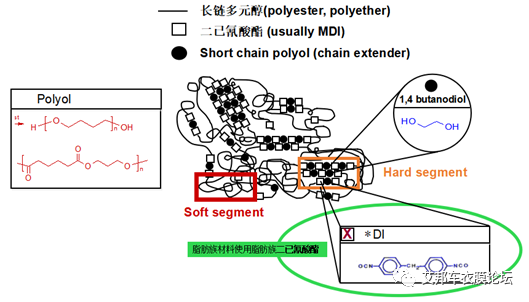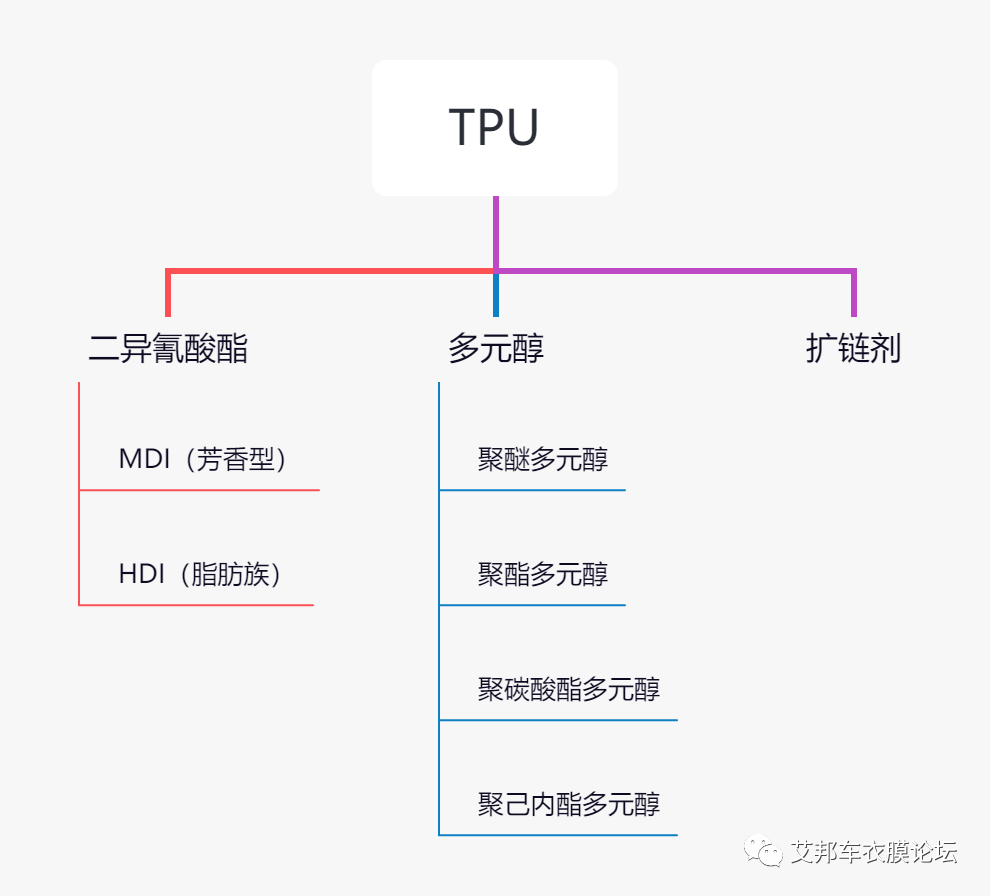Automobile paint protection film can protect the surface of the vehicle from scratches, gravel impact wear, and minor man-made damage, easy to maintain, beautiful, and can keep the car paint bright for a long time.
In recent years, with the rapid development of the economy, the per capita consumption income of the people has grown rapidly, China's new passenger car sales have long ranked first in the world, and the car owners have become more and more receptive to paint protection film.
Among them, TPU film for invisible car clothing is an important raw material for finished paint protection film, and its performance plays a crucial role in the quality of the finished product, such as hydrolysis resistance and yellowing resistance. In this article, we will talk about the hydrolysis resistance of TPU films and accelerated test methods.
1. TPU structure and performance
To understand the properties of TPU films, it is necessary to first understand the structure of TPU materials. For example, first of all, it is necessary to choose TPU with aliphatic structure to obtain excellent outdoor photoaging performance, that is, no yellowing, and secondly, in the structural design, it is necessary to achieve a good balance between hydrolysis resistance and chemical resistance.
As we all know, TPU is a block polymer composed of soft and hard segments.
Diisocyanates react with small molecule diols to form the hard segment of TPU, and dicyclohexylmethane-4,4'-diisocyanate (H12MDI) is a typical aliphatic diisocyanate. If you don't choose a TPU with aliphatic structure, no matter how much UV stabilizer and absorber are added, it is impossible to achieve a long-term non-yellowing effect for aromatic TPU!
Diisocyanates react with macromolecular glycols (molecular weights of several hundred to thousands) to form the soft segment of TPU.

Generally speaking, the hard segment structure of TPU determines its hardness, tensile modulus, chemical resistance, wear resistance and other properties, while the soft segment structure and content determine the elasticity, low temperature and flexibility performance of the product.

Although polyether-based materials have both flexibility and excellent hydrolysis resistance, their tear resistance and chemical resistance are not up to standard, both of which are fatal to the car coating film, so polyether materials cannot be selected for the production of car clothing.
For the material of polycarbon structure, the low temperature and flexibility are too poor, and the price is too expensive, so it is not an option.
Polycaprolactone and some copolyesters with special structures have excellent mechanical properties, good chemical resistance, and hydrolysis resistance to meet the requirements. Although the hydrolysis resistance of this type of material is always not comparable with that of polyether materials, it meets the requirements of actual mounting for several years, and at the same time has the excellent mechanical tensile properties, tear resistance, and chemical resistance required by the car coating film.
2. TPU hydrolysis mechanism
TPU car coating hydrolysis refers to the gradual breakage of the ester group of the TPU molecular chain segment under the combined action of temperature and humidity, and the molecular weight of TPU gradually decreases, so the mechanical properties decrease, which reduces the protective performance, reduces the scratch and impact resistance, loses the protective ability, and loses the elasticity, and the strength decreases to the point that the residual car coating film cannot be successfully torn off the surface of the car paint, and the film is slowly scraped off by solvents and other means, which is very damaging to the car paint.
This kind of thing has happened several times on a large scale in the industry, and in the case of outrageous conditions, after the inferior product is picked up after a high temperature in summer, the degree of hydrolysis has been so large that not only does it not have protective performance, but also the strength is so low that the film can not be torn off and replaced normally.
You can refer to the real video below. This is also the reason why everyone is so afraid of the hydrolysis of the car coating film.
In addition, from a scientifically rigorous point of view, both polycaprolactone and general polyester contain ester bonds in the molecular segments, so unlike polyether TPU, polyester TPU is always at risk of gradual hydrolysis. Brands should avoid overly categorical slogans such as "never hydrolysis".
However, practice has proved that qualified PCL and specific copolyester materials can meet the requirements of actual use scenarios of car clothing even if they are slowly hydrolyzed.
3. Accelerated test of TPU hydrolysis resistance
The use environment of the car coating film determines that customers are extremely concerned about photoaging resistance and hydrolytic aging, and the TPU selected for the car coating film cannot be hydrolyzed forever, so it is necessary to use scientific methods to carry out accelerated aging tests to verify that the aging resistance of the material does meet the requirements.
There are many methods for testing hydrolysis resistance, TPU material manufacturers generally use 70-80 °C hot water baths, and there are also more stringent ones, such as Zhongshan Prius chooses 80 °C, and the acceleration effect is better.
Test process: cut the membrane into dumbbell-shaped splines (or roll into small rolls) and put them into a jar filled with 80 °C water, put the jar into an 80 °C incubator, take out the spline at a time point according to the hydrolysis time, and test the tensile strength after drying in a laboratory environment of 23±5 °C and 55±20% laboratory environment, generally continuous test for 672 hours, and test tensile strength and elongation at break every 168 hours.
The test data of accelerated hydrolysis aging of Propris original film and several similar original films circulating on the market are as follows:

After 672 hours of accelerated hydrolysis test, the residual tensile strength of PPF and Prius AS1085, AS1093, AS8093H is higher than 20Mpa, which meets the requirements of actual outdoor pick-up.
Ordinary polyester TPU is completely hydrolyzed after 672 hours, and some inferior polycaprolactone TPU on the market has been tested for 672 hours of accelerated hydrolysis, and the residual tensile strength is even lower than 10Mpa, which is broken as soon as it is pulled, and long-term use is risky compared with regular products.
|
AS8093H finished film |
Original Strength of the Clothing (Feb. 2022) |
After 20 months of mounting, part of the film was peeled off for testing |
||
|
Tensile strength (Mpa). |
Elongation at break (%) |
Tensile strength (Mpa). |
Elongation at break (%) |
|
|
Ideal car livery tear off |
35.5 |
372 |
34.7 |
346 |





